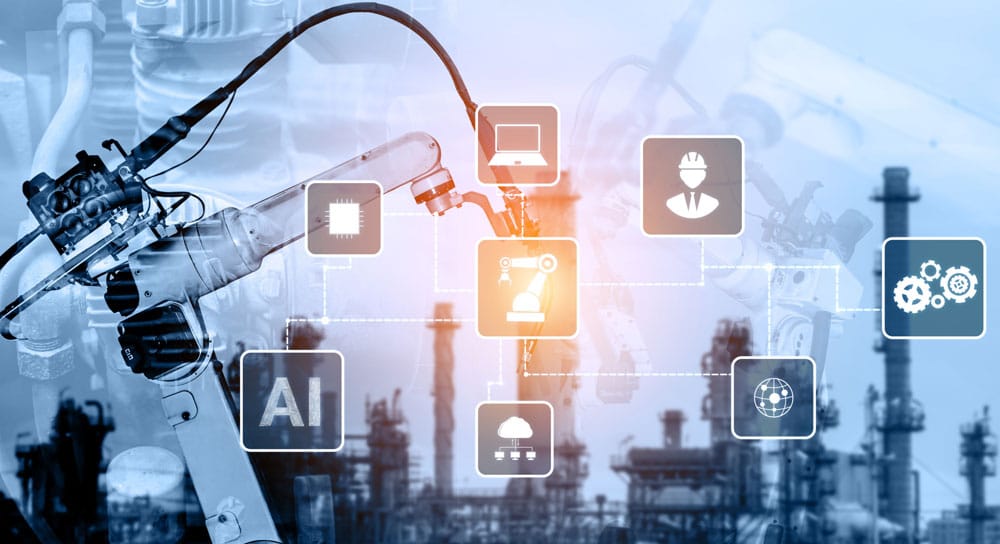Imagine infrastructure management in which failures and malfunctions can be predicted and resolved before they even happen. Kind of like a Minority Report applied to the field of engineering. Predictive maintenance, made possible by artificial intelligence, is leading to just that and may represent a substantial paradigm shift in engineering management. By analyzing infinite data in real time and identifying patterns of possible risks, AI not only optimizes resources but also extends the life of infrastructure while improving its safety.
Using advanced technologies such as machine learning and IoT sensors, artificial intelligence can monitor the condition of complex facilities and predict when and where problems will occur. No breakdowns or service interruptions at a reduced operational cost. Utopia? In truth, it is already reality applied in multiple companies. In the course of this article we will discover how predictive maintenance is revolutionizing the industry at a staggering rate.
How does predictive maintenance work?
In truth in a very simple way, as much as it is effective. Predictive maintenance is based on the continuous analysis of data, collected by sensors installed on various infrastructure components, such as bridges, roads, buildings and industrial plants. The sensors monitor essential parameters, such as may be vibration, temperature, pressure and deformation. Im then, the collected data are processed by algorithms and machine learning to identify patterns and signals that precede failures. These algorithms are trained to recognize significant variations in the behavior of materials and structures, allowing intervention only when necessary. In this way, infrastructure becomes “proactive” with respect to potential problems: any variation or anomaly recorded is interpreted as a signal of possible future criticality. As a result, one drastically optimizes one’s resources on a much smaller budget, not to mention that one can ensure greater longevity of the same infrastructures well in advance.
In addition, it should not be forgotten that machine learning algorithms are continuously improving, refining their ability to detect patterns of degradation or malfunction, providing increasingly accurate predictions. This learning capability allows artificial intelligence to adapt to changing infrastructure conditions, becoming more efficient as the system acquires new data. It is a mechanism in a continuous state of independent improvement.

Multiple benefits for one competitive technology
Predictive maintenance has countless advantages, the first among them being the possibility of increasing the safety of the infrastructure under consideration. Just think of the fact that predicting a structural problem makes it possible to schedule maintenance at “opportune” times, such as those times that do not interfere with traffic or business operations. This minimizes the risk of accidents and ensures continuity of services, without creating unpleasant inconvenience to the public.
Another advantage of considerable consideration is the reduction in costs compared with reactive maintenance. The latter, in fact, takes place only after a failure occurs and, for this reason, often requires quite high expenses due to the urgency of interventions and the damage that the problem may have generated in the meantime. With predictive maintenance, on the other hand, an intervention can be planned in advance, minimizing costs since there is no real urgency and resources can organized more efficiently and wisely.
Lots of opportunities, but with some initial disadvantages to overcome
To implement a predictive maintenance system, one must first start with an appropriate technological infrastructure. The installation of smart sensors to ensure continuous monitoring is essential, and these should be selected based on the types of infrastructure and the specific parameters to be monitored. For example, in a bridge it may be necessary to monitor vibration and corrosion, while in a water system it is more important to detect leaks. In each project one must, first of all, determine the type of sensor to be adopted.
Once the sensors are installed, the company must have a system for collecting, storing, and analyzing the data, which must be scalable and secure. Data from sensors are much more voluminous than what we are used to and therefore require a robust IT infrastructure. Without a doubt, the use of cloud computing for real-time storage and management is strongly recommended, if not necessary depending on the project.

Training as an indispensable element of predictive maintenance
In addition to technology, the human element, which must supervise the work of AI, must not be forgotten: staff training is indispensable and cannot be waived. Managers must be able to correctly handle and interpret the data analyzed by artificial intelligence so that they can use it with a clear logical sense. Engineers must also be able to work with algorithms and machine learning to understand predictions and apply them concretely in maintenance planning. Otherwise, all the efforts and data obtained with AI are virtually useless.
The application of artificial intelligence with predictive maintenance certainly represents a momentous breakthrough for infrastructure engineering and architecture, but we must not forget that behind every great technology there must always be human effort. Technology can help us speed up purely manual work, give us new data with greater speed or give us more information than we would normally have. But without a human being who recognizes the opportunities offered by data for what they are, artificial intelligence loses all the great advantages it has so generously given us.
Image sources: Made CC, Digital Agenda, Anac Italy Services

